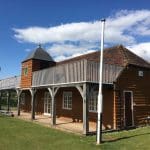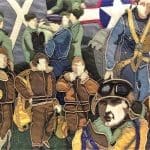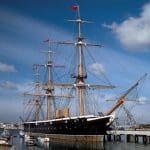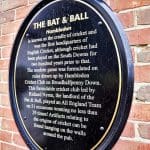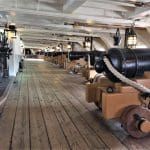Mark Bibby Jackson travels to Hampshire where he learns of cricketing tales of yore, seafaring adventures and discovers a most poignant reminder of man’s follies in the D-Day Story.
Although Lord’s may be the home of cricket, the village of Hambledon in Hampshire lays claim to be the ‘cradle of cricket’.
At one stage the local team was a match for all – conquering England by an innings in 1777. I learn all this while digesting a sweet potato, spinach and goats cheese pie in the local pub The Bat and Ball, surrounded by cricketing memorabilia, including a scorecard from the 1777 match, and a photograph of WG Grace himself, whom I doubt would have approved of my luncheon choice.
Across the country lane on Broadhalfpenny Down stands the pitch where the Broadhalfpenny Brigands Cricket Club still plays, taking on all-comers including this year, the Nairobi Nomads, Rioters CC and Sons of Bacchus CC, who presumably spend more time in the Bat and Ball than in the middle.
Hambledon: The Cradle of Cricket
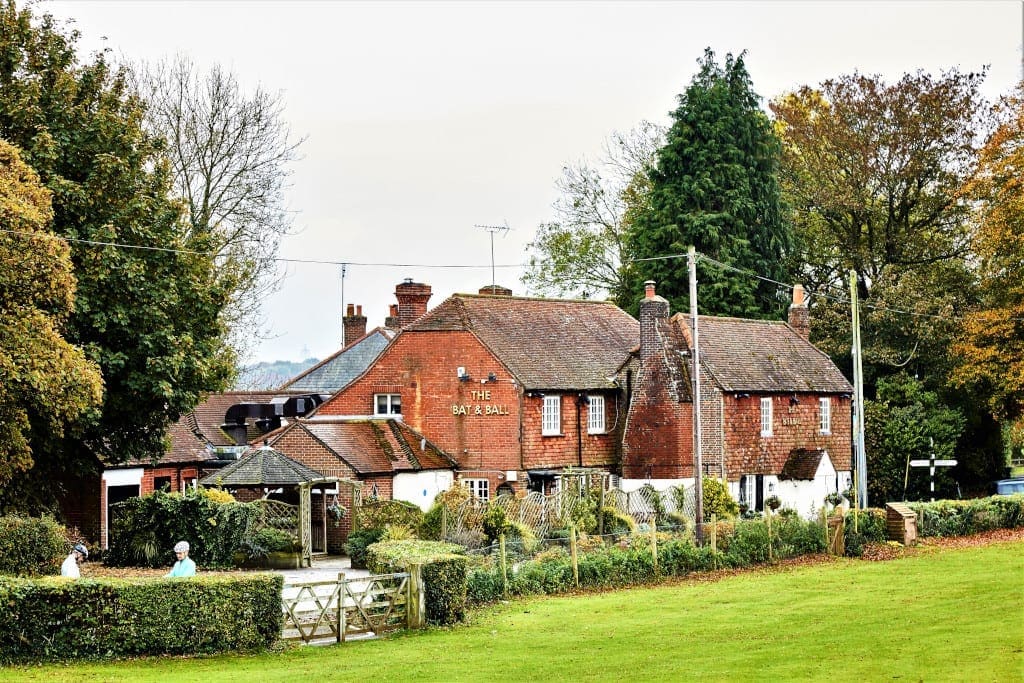
This seems more than appropriate for between 1762 and 1772, the captain of Hambledon was Richard Nyren, who doubled up as the landlord of the Hutt – as the Bat and Ball was then called then; a true all-rounder. In those days, the pub was much smaller than the spacious gastro today. No more than a snook, it took up the space now appropriately called the Nyren Room at the front of the pub.
Although cricket predates the pub by more than a couple of centuries, it was here that the complex rules began to evolve, no doubt by men with a penchant for mischief – perhaps after one too many pints of ale. When the debate became heated they would have to pass from one side of the bar to another, as the Hutt strode the boundary between the parishes of Hambledon and Clanfield, which had different licensing hours; a white line now marks the divide.
Indeed, so strong is the influence this tiny village has on the origins of the game, that the original first-class fixture is now accredited as having been played at Broadhalfpenny Down, once the grazing sheep had been moved on, between a Hampshire (the name interchanged with Hambledon) XI and England XI in 1772. Sadly, Hambledon’s pre-eminence began to fade and in 1787 the Earl of Winchilsea commissioned Thomas Lord to build a new ground in London that would become the Marylebone Cricket Club, or as it is more familiarly known as Lord’s.
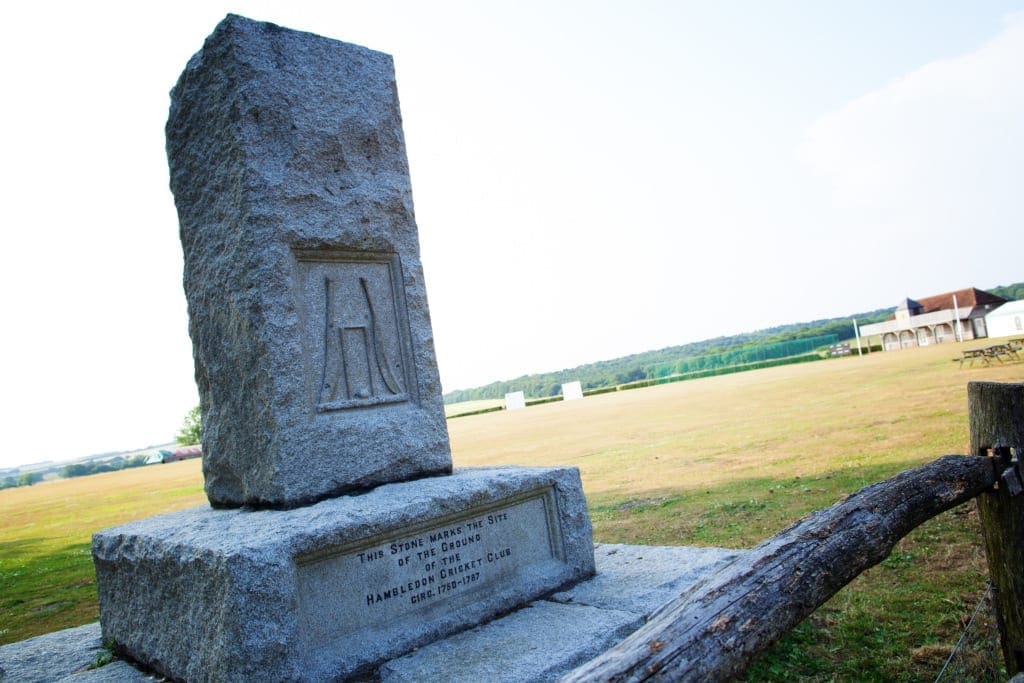
It is somewhat reluctantly that I drive a few miles through idyllic country roads to the village of West Meon, where the body of Thomas Lord is laid in the cemetery. There, I take an extremely good yet somewhat treacherous pint in the pub named after him, before setting off to the new home of cricket, at least in these parts – the Ageas Bowl –, where I am booked in to stay at the Hilton hotel there.
Portsmouth Historic Dockyard
The history of Hampshire is not just closely interwoven with that of cricket. The following morning, a short drive – this time along colourless motorways – takes me to Portsmouth, home to the Navy’s Historic Dockyard.
As a quasi-pacifist, I must admit to having certain misgivings about entering a museum it could be claimed glorifies war. I was surprised to see so many children wondering around the vast site, although judging by the complaints of one young tot, it was perhaps father rather than son who had suggested this to be the perfect way to spend a Saturday morning – although this was very much the exception rather than the rule.
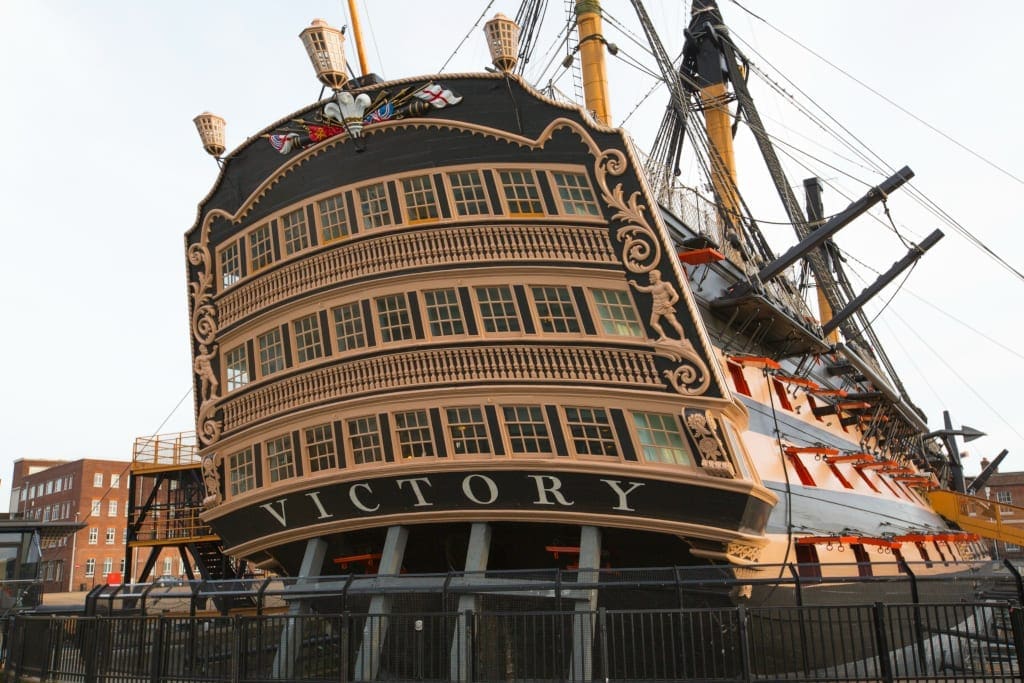
The site has two battleships from different eras – the HMS Warrior and Nelson’s own HMS Victory. Walking over the two, you can see how fashions had changed between 1805 when Nelson commanded Victory at Trafalgar to 1860, when Warrior was launched, apparently the largest warship in the world at the time. The latter is much more spacious and commodious – those over six foot are forewarned about the cramped space on Victory’s lower levels. However, it is on the Victory’ deck that you can stand at the point where England’s most famous naval commander met his death, as immortalised both in film and art.
Nelson’s life, carer and subsequent portrayal features strongly in the National Museum of the Royal Navy, which also has an exhibition on the history of the Jolly Rodger. Interesting though it was, I must admit to feeling certain displays seemed more geared to Navy recruitment than historical accuracy, but really the Dockyard is more a testament to our naval past (and present) than a glorification of war.
A ticket allows you to take harbour tours as well as visit the Explosion Museum of Naval Firepower across the waters in Gosport, although entrance to the Mary Rose Museum is via another entrance, next to the Naval Dockyard, and requires a further ticket.
The D-Day Story
There is no shred of glorification of war at the D-Day Story, a short drive from Portsmouth at the seaside resort of Southsea.
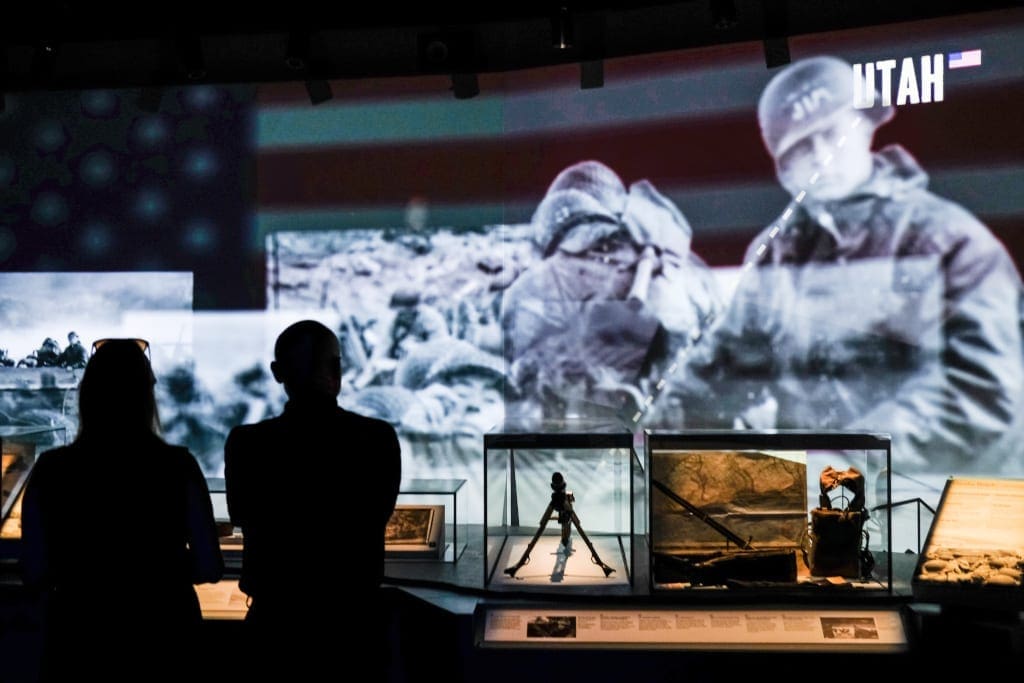
On one side of the small museum is an exhibition devoted to the preparations for that most momentous day on 6 June 1944. Perhaps most poignant are the videos with actors telling the personal stories of soldiers and resistance fighters on the eve of the Operation Overlord landing, including one soldier reading out his letter back home to his mum.
Opposite, is a room containing the Overlord Embroidery designed by Sandra Lawrence and stitched at the Royal School of Needlework. Completed in 1974, with 34 panels and stretching 83 metres long, this is the most remarkable testament to a country at war.
Every aspect of the human loss suffered in the conflict is contained here, right up to the final scene where soldiers are depicted marching into Paris on 25 August passing a group of French people huddled over a dying man – up to 20,000 French resistance fighters were killed in the three months of fighting after the D-Day landing. However, for me the most stirring testament is a video of one of the survivors, Douglas Turtle, describing how he stood on the beach with the dead bodies of soldiers all around him, asking, “What for? What for?”, tears in his eyes.
D-Day Story Re-enactment and Craft Beers
Somewhat surprisingly, the tiny village of Southwick played a significant role in Operation Overlord. It was at his base in neighbouring Southwick House that Dwight D Eisenhower made the decision to go ahead with the landing, committing some three million men, including Douglas Turtle, to the campaign.

Each year, the village stages a D-Day Revival with live music, a beer festival and possibly a couple of small steam engines. There is also a small museum in the Southwick Brewhouse, which was in operation for around 300 years up to 1957, and now has a range of some 200 beers to take home with you.
In 2019, the revival takes place on 8 and 9 June, much of it revolving around the Golden Lion pub, which was the unofficial officer’s mess in the build up to the landings. It now quite rightly appears in the CAMRA Good Beer Guide, and even if, like me, you are not into re-enactments, it is well worth a visit just to try its fine ales, once more like me.
It is here that my ramble through Hampshire concludes, supping a beer and reflecting on how we never seem to heed the lessons of the past, no doubt much like Richard Nyren did 250 years ago in The Hutt. That is when he was not contemplating bowling maiden overs and short legs.
Cradle of Cricket, Naval Dockyard and D-Day Story Photos
For more information on things to do in Hampshire
Click here, and here for cricket-themed ideas in the county. Also, click here for a video by Andrew Jones of the D-Day Museum.
